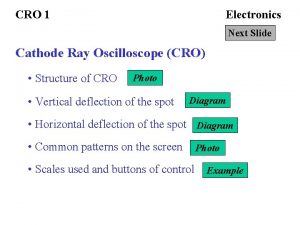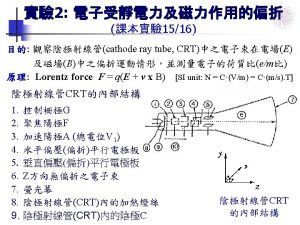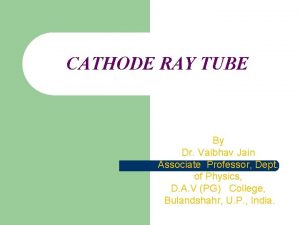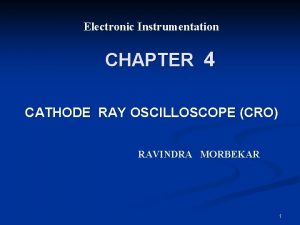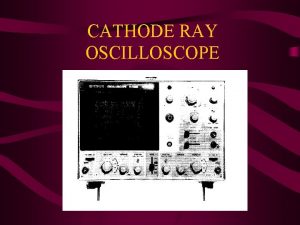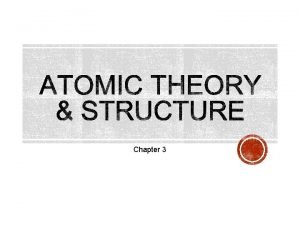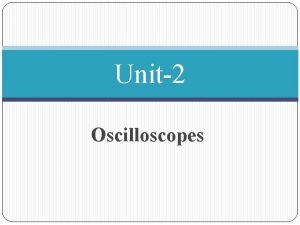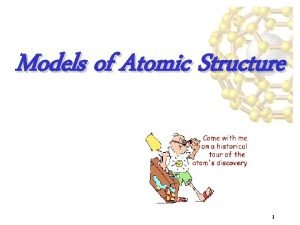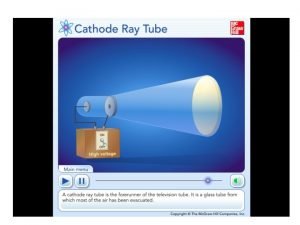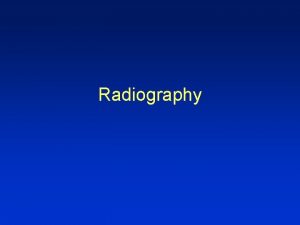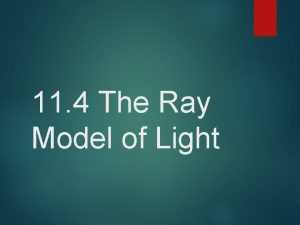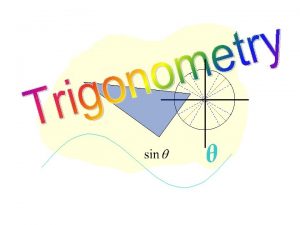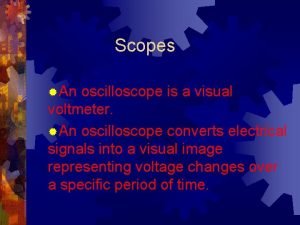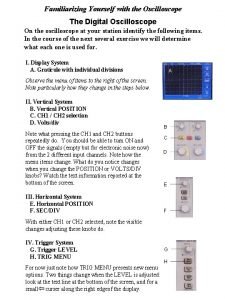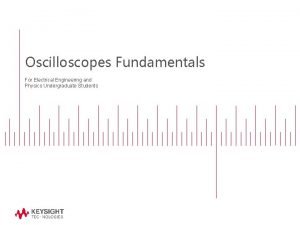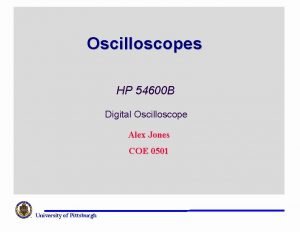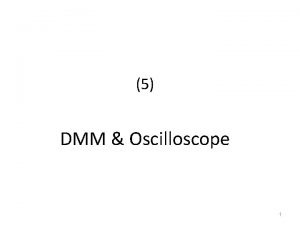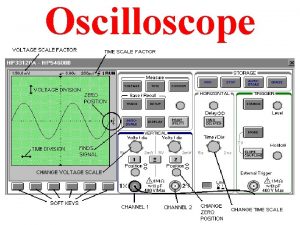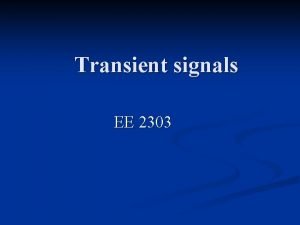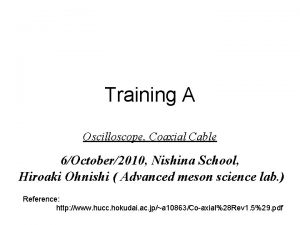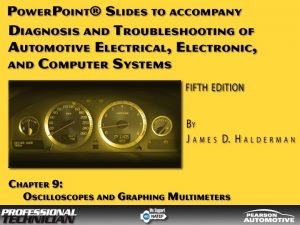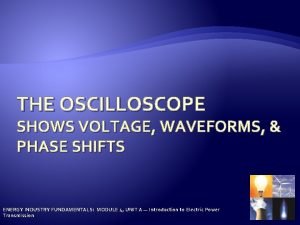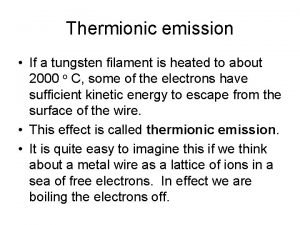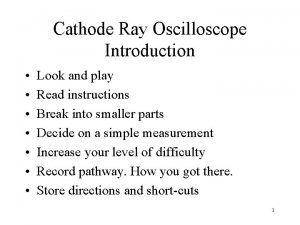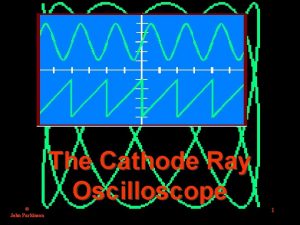CRO 1 Electronics Next Slide Cathode Ray Oscilloscope















































- Slides: 47

CRO 1 Electronics Next Slide Cathode Ray Oscilloscope (CRO) • Structure of CRO Photo • Vertical deflection of the spot Diagram • Horizontal deflection of the spot Diagram • Common patterns on the screen • Scales used and buttons of control Photo Example

Electronic Device 1 Electronics Next Slide Electronic Devices • Semiconductor diode Diagram • Light emitting diode (LED) Diagram • Light dependent resistor (LDR) Diagram • Thermistor Diagram • Reed switch Diagram • Reed relay Diagram • Potential divider (Potentiometer) Diagram

Logic Gates 1 Electronics Next Slide Logic gates • Definitions of a logic gate • Various kinds of logic gates Explanation Diagram

Integrated Circuit 1 Electronics Next Slide Integrated circuit • Fire alarm Diagram • Safety thermostat for water heating system Diagram • Car door warning signal Diagram • Simple burglar alarm Diagram • Night-time anti-theft device for cars Diagram

END of Electronics

CRO 1 Electronics Next Slide • A Cathode Ray Oscilloscope (CRO) is shown below.

CRO 1 Electronics Next Slide • The structure of CRO is shown below. It can be divided into three parts, electron gun, deflection system and fluorescent system. fluorescent electron gun screen cathode grid anodes Y-plates X-plates electron beam deflection system spot

Back to CRO 1 Electronics Click Back to • Electron gun : It emits a narrow beam of electrons which is called cathode ray. • Deflection system : It can deflect the path of electrons vertically by applying a p. d. across the X-plates and horizontally by applying a p. d. across the Y-plates. • Fluorescent screen : It is coated with fluorescent material. When the electron beam hits the screen, light is emitted.

CRO 1 Electronics Next Slide • Suppose X-plates have no connection, the patterns on the screen for different kinds of input voltage for Y-plates are shown below. screen • 0 V across Y-plates means no deflection for the electron beam. The spot is at the centre of the screen.

CRO 1 Electronics Next Slide screen • A constant d. c. voltage , say 3 V, is across Yplates means deflection for the electron beam. The spot is deflected upwards. The larger the d. c. voltage, the larger the deflection is.

Back to CRO 1 Electronics Click Back to screen • A non-constant a. c. voltage (50 Hz), is across Y -plates means unstable deflection for the electron beam. The spot is deflected upwards and downwards rapidly and forms a vertical straight line. • The p. d. across the Y-plates is measured by the Y-gain control (or gain control). It is calibrated in V/cm or V/div. The p. d. can then be found by measuring the deflection of the spot from the centre of the screen.

Back to CRO 1 Electronics Click Back to • The X-plates are connected to a special circuit called timebase circuit. It makes the spot to sweep across the screen from left to right at a steady rate and then the spot will move back to its starting point very rapidly and repeat the motion. time-base circuit • The sweeping rate is measured by s/cm or s/div. screen

CRO 1 Electronics Next Slide • Common patterns on the screen on the CRO are shown. Y-plate : no connection X-plate : no connection Y-plate : d. c. voltage X-plate : no connection

CRO 1 Electronics Next Slide • Common patterns on the screen on the CRO are shown. Y-plate : a. c. voltage X-plate : no connection Y-plate : no connection X-plate : time base circuit

CRO 1 Electronics Next Slide • Common patterns on the screen on the CRO are shown. Y-plate : d. c. voltage X-plate : time base circuit Y-plate : a. c. voltage X-plate : time base circuit

Back to CRO 1 Electronics Click Back to • The control panel of a CRO is shown below. • CRO can act as a voltmeter for both d. c. and a. c.

CRO 1 Electronics Next Slide An a. c. power supply is connected to the CRO as shown. (a) What is the peak voltage of the a. c. supply? (b) What is the frequency of the a. c. supply? 20 ms/div Time base 5 V/div Gain control X-plate. Y-plate Earth a. c. supply

Back to CRO 1 Electronics Click Back to • Peak voltage = 1 5 V = 5 V • Period = 4 20 ms = 80 ms = 0. 08 s Frequency = 1/T = 1/0. 08 = 12. 5 Hz

Electronic Device 1 Electronics Next Slide • Semiconductor diode and its symbol are shown below: symbol

Back to Electronic Device 1 Electronics Click Back to • Diode allows the current to flow through it only in the direction indicated. If the current wants to flow through it in opposite direction, the circuit is treated as an open circuit closed (lamp lighted) circuit opened (lamp not lighted)

Electronic Device 1 Electronics Next Slide • Light emitting diode (LED) and its symbol are shown below: symbol

Back to Electronic Device 1 Electronics Click Back to • A LED emits light when current flows through it in the forward direction. LED lighted circuit closed (lamp lighted) LED not lighted circuit opened (lamp not lighted)

Electronic Device 1 Electronics Next Slide • Light dependent resistor (LDR) and its symbol are shown below: symbol

Back to Electronic Device 1 Electronics Click Back to • Resistance of LDR depends on the intensity of light falling on it. In the dark, the LDR has a high resistance. In the light, it has low resistance. LED glows when LDR is lighted by a torch. LED dies out when the torch is removed.

Electronic Device 1 Electronics Next Slide • Thermistor and its symbol is shown below: symbol

Back to Electronic Device 1 Electronics Click Back to • The resistance of thermistor, which is made from a semiconductor, varies with temperature. If we heat the semiconductor, its resistance decreases. LED glows when thermistor becomes hot. LED dies out when thermistor becomes cold.

Electronic Device 1 Electronics Next Slide • Reed switch and its symbol is shown below: symbol

Electronic Device 1 Electronics Next Slide • Reed switch consists of two metal contacts inside a glass envelope. When a magnet is brought near the switch, the metal become magnetized and they would be in contact with each other. If we remove the magnet, the contact disappears. magnet N S The magnet closes the circuit and the buzzer produces sound After removing the magnet, the circuit becomes open and the sound disappears. buzzer

Back to Electronic Device 1 N S Magnet in the door N door S fixed magnet Electronics Click Back to • The circuit shows how a reed switch can be used for burglar alarm. If someone opens the door without permission, the alarm sounds.

Electronic Device 1 Electronics Next Slide • Reed relay and its symbol are shown below: symbol

Back to Electronic Device 1 Electronics Click Back to • Reed relay consists of a reed switch inside a coil. When current passes through the coil, it becomes an electromagnet and the reed switch is closed. Therefore, we can control the flow of large current in a circuit with a small current. Circuit with small current M Close the switch would close the reed relay and hence switch on the motor. Circuit with large current

Electronic Device 1 Electronics Next Slide • 2 variables resistors for potential dividers are shown below:

Back to Electronic Device 1 Electronics Click Back to • Different kinds of potential dividers are shown below: Sliding contact Potential divider circuit which contains a variable resistor. Potential divider circuit which contains one fixed resistor and an LDR.

Back to Logic Gates 1 Electronics Click Back to • High potential or low potential can be fed into a device which would gives out an output voltage (may be high or low potential). This device is called a logic gate. The output depends on the input signal as well as the logic gate used. Input (may be one or two) Logic gate Output (only one) • High potential is represented by (1/+/True). • Low potential is represented by (0/ /False). • The table that describes the behaviour of that kind of logic gate is called a truth table.

Logic Gates 1 Electronics Next Slide • NOT Gate • AND Gate Symbol : A Output A Truth table : A 1/T 0/F Output 0/F 1/T Output B Truth table : A 0/F 1/T B 0/F 1/T Output 0/F 0/F 1/T

Logic Gates 1 Electronics Next Slide • OR Gate • NAND Gate Symbol : A Output B Truth table : A 0/F 1/T B 0/F 1/T Symbol : A Output B Truth table : Output 0/F 1/T 1/T A 0/F 1/T B 0/F 1/T Output 1/T 1/T 0/F

Back to Logic Gates 1 Electronics Click Back to • NOR Gate Symbol : A Output B Truth table : A 0/F 1/T B 0/F 1/T Output 1/T 0/F 0/F

Integrated Circuit 1 Electronics Next Slide • Fire alarm’s integrated circuit • Purpose : At room temperature, the buzzer does + high potential not sound. At fire, the buzzer sounds. A O low potential

Back to Integrated Circuit 1 Electronics Click Back to • Normal state : At low temperature, the resistance of thermistor is very large compared with the resistance of the variable resistor. Point A is said to be at high potential (+) since the p. d. between A and low potential line is much larger than the p. d. between A and high potential line. Hence, the output O should be at low potential ( ) and the buzzer does not sound. • At fire : At high temperature, the resistance of thermistor is very small compared with the resistance of the variable resistor. Point A is said to be at low potential ( ) since the p. d. between A and low potential line is much smaller than the p. d. between A and high potential line. Hence, the output O should be at high potential (+) and the buzzer sounds. • The variable resistor can be adjusted to change the sensitivity of the circuit.

Integrated Circuit 1 Electronics Next Slide • Safety thermostat for water heating system’s integrated circuit • Purpose : Heater is on only when water is present + high potential and the temperature is low A B heater low potential

Back to Integrated Circuit 1 Electronics Click Back to • When water is present, B is at high potential (+). When temperature is low, the resistance of thermistor is large. Therefore, the p. d. between A and low potential line is large and A is also at hight potential (+). The output would be at high potential and the reed relay would switch on the heater. • If water is not present or the temperature of the water is high, either A or B would be at low potential. The output would be at low potential and the reed relay would switch off the heater. • The variable resistor can be adjusted to change the sensitivity of the circuit.

Integrated Circuit 1 Electronics Next Slide • Car door warning signal’s integrated circuit A B • Purpose : If either of the two car doors (with the + high potential switches installed) is not closed, the LED should be on. low potential

Back to Integrated Circuit 1 Electronics Click Back to • When both switches are closed, A and B are both at low potential ( ). The output is low potential and no current would flow through the LED. No light would be observed. • If one of the switch is open, either A or B would not be at low potential ( ). It is said to be at high potential (+). The output is high potential and current would flow through the LED in the indicated direction. Light would be emitted.

Integrated Circuit 1 Electronics Next Slide • Simple burglar alarm’s integrated circuit A B • Purpose : If the floor (with switch installed) is stepped + high potential or the light from a torch is O detected (by the LED), the alarm should sound. low potential

Back to Integrated Circuit 1 Electronics Click Back to • If the switch is pressed, A is at low potential ( ). If light falls on the LDR, the resistance of the LDR would be so small that the p. d. between B and the low potential line becomes very small. B would be at low potential. Therefore, when the switch is pressed or the light is detected by LDR, either A or B would be at low potential ( ), the output is at high potential (+) and the alarm sounds. • When the switch is open and no light is detected, both A and B would be at hgih potential (+). The output is at low potential. The buzzer does not sound.

Integrated Circuit 1 Electronics Next Slide • Night-time anti-theft device’s integrated circuit (for cars) • Purpose : The motor can only be switched on by + high potential pressing the switch at the daytime. A B O M low potential

Back to Integrated Circuit 1 Electronics Click Back to • At daytime and the switch is pressed, A is at low potential ( ) and B is also at low potential ( ) due to the small resistance of the LDR. Therefore, the output is high potential (+) and the reed realy switch on the motor. • When the switch is open and no light is detected, both A and B would be at high potential (+). The output is at low potential. The buzzer does not sound.
 What is a cro
What is a cro Cro electronics
Cro electronics Crt l
Crt l What is in the image
What is in the image L crt
L crt Block diagram of oscilloscope
Block diagram of oscilloscope Cathode ray oscilloscope function
Cathode ray oscilloscope function X.next = x.next.next
X.next = x.next.next Diagram of crt
Diagram of crt Advantages of cathode ray tube
Advantages of cathode ray tube Jj thomson model
Jj thomson model Cathode ray tube tracker
Cathode ray tube tracker Cro formula
Cro formula Cathode-ray tube
Cathode-ray tube Raster scan display and vector scan display
Raster scan display and vector scan display Rutherford pictured the atom as a dense
Rutherford pictured the atom as a dense Goldstein cathode ray tube
Goldstein cathode ray tube Roentgen tube
Roentgen tube Ano ang heel and toe polka
Ano ang heel and toe polka Ray model of light
Ray model of light Ray tracing and ray casting
Ray tracing and ray casting Quadrants of sin cos tan
Quadrants of sin cos tan Voltmeter vs oscilloscope
Voltmeter vs oscilloscope Oscilloscope high pitch
Oscilloscope high pitch Oscilloscope
Oscilloscope Diode vs triode
Diode vs triode Oscilloscope theory
Oscilloscope theory Hewlett packard 54600b oscilloscope
Hewlett packard 54600b oscilloscope Signal generator proteus
Signal generator proteus Dmm oscilloscope
Dmm oscilloscope Oscilloscope is basically a
Oscilloscope is basically a Transient signal oscilloscope
Transient signal oscilloscope Oscilloscope coaxial cable
Oscilloscope coaxial cable An oscilloscope display grid or scale is called a
An oscilloscope display grid or scale is called a Phase shift oscilloscope
Phase shift oscilloscope Oscilloscope fundamentals
Oscilloscope fundamentals Agilent oscilloscope basics
Agilent oscilloscope basics Continued on next slide
Continued on next slide European cro
European cro Kronospan cro
Kronospan cro Mkr cro
Mkr cro First humans
First humans Mkr cro
Mkr cro Cro screening
Cro screening Cro presentation
Cro presentation Diagram of cro
Diagram of cro Why filament is heated in cro
Why filament is heated in cro Academic cro
Academic cro

